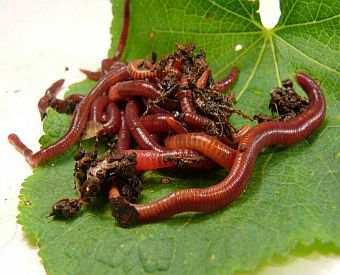Some Known Details About Red Wiggler Express
Some Known Details About Red Wiggler Express
Blog Article
All about Red Wiggler Express
Table of ContentsRed Wiggler Express - QuestionsTop Guidelines Of Red Wiggler ExpressA Biased View of Red Wiggler ExpressWhat Does Red Wiggler Express Mean?Not known Details About Red Wiggler Express
It's risk-free to state this things would have been terrific to include as a to vermicomposting systems! And the prospering Red Worm populace? It simply never occurred. Also in the lot that was established directly before yard composters with existing Red Worm colonies. Yet these nutritionally-boosted wood chip environments are absolutely packed with Lumbricus sp.
Many selections, consisting of Red Wigglers, European Nightcrawlers, and Lumbricus species were brought over from the European continent. Below's the thingNative or not - and as gifted as they are at being able to endure in a wide-range of settings and problems -. In other words, they are much more most likely to hang out in any active composting systems you have actually established, than they are to wander off and begin spoiling the atmosphere.
Roots call for oxygen for respiration and count on smooth airflow within the soil to flourish. However, when it rainfalls, soil can come to be saturated with water, decreasing the oxygen available and impeding vitamins and mineral absorption - Red Wiggler Express. To maintain an ideal balance, the soil should enable water to drain appropriately, leaving sufficient room for air to support root wellness
Red Wiggler Express for Beginners

When it pertains to worms for composting, what comes to mind? If you were an earthworm dog breeder, dealership, or ordinary gardener, after that you 'd recognize that red wiggler worms are the perfect worms for vermicomposting. To get more information concerning these earth wonders, checked out some of the red worm realities listed below.
(https://cleangreendirectory.com/gosearch.php?q=Red+Wiggler+Express&search-btn.x=47&search-btn.y=9)If they stretch their bodies, you'll be able to see the red stripes on their skin. When elevating worms such as red wiggler worms, you must be able to know just how to profit them. When you're able to keep and look after their environment well, and additionally feed them the right kinds of natural wastes, after that they'll have the ability to generate nutrient-packed and quality-rich worm castings for you (likewise called worm poop or garden compost).
See This Report on Red Wiggler Express
What do worms consume? Well, these red wriggler worms can be fed with kitchen scraps and yard wastes.

This actions makes them appropriate permanently in worm containers, garden compost stacks, and various other confined rooms where organic waste is plentiful. Producing an optimal setting for red wigglers requires a thoughtful technique. Take into consideration the complying with crucial aspects to care for red wigglers at home and ensure their health: Utilize a bedding of shredded newspaper or cardboard.

Red wiggler worms reproduce by laying tiny, lemon-shaped eggs in protective cocoons. These cocoons are usually transferred in the bed linen and hatch into child worms within a couple of weeks.
What Does Red Wiggler Express Do?
Their flexibility and strength have made them a preferred option for vermicomposting in various regions all over the world. Yes! They can survive from a variety of 32F to 90F. They are super adaptable pests. Take into consideration protective procedures for extremely severe temperature levels such as: Insulating the worm bin with layers of straw or leaves.

Simply bear in mind - you can always add even more food later on (yet it's hard to get rid of feed once it's been added to a container!).
Because I fed the red wigglers and garden compost worms way too much, they weren't able to maintain up and with time the older food went uneaten and created anaerobic conditions that eliminated the worms. The bright side is that there are extremely simple actions you can take to guarantee this does not happen! Below're the 6 gold policies for how commonly and just how much to feed your worms: Regulation # 1: Moderation! You can always add more food later.
The Buzz on Red Wiggler Express
Leftover food will cause anaerobic problems that will certainly eliminate your live worms. It is alright to sprinkle a little of their original bedding (which should already be in the container) over the food, however the food must never be hidden and should be noticeable to your eye. Policy # 5: See guideline # 1! Regulation # 6: After the first feeding, feed the worms 1/3 to 1/2 of their weight.
Report this page